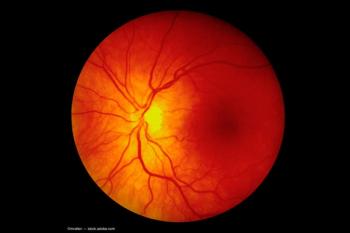
Fighting AMD through the power of nutrition
Examining how nutrition affects vision, and how physicians need to encourage healthy diets that contain essential nutrients and antioxidants essential for healthy vision.
TAKE-HOME
Examining how nutrition affects vision, and how physicians need to encourage healthy diets that contain essential nutrients and antioxidants essential for healthy vision.
Dr. Eggersdorfer
By Manfred Eggersdorfer, PhD
Age-related macular degeneration (AMD) is the leading cause of blindness for people 55 years and older in the United States.
The studies
As Ophthalmology Times has covered, in 2008, the National Eye Institute’s first Age-Related Eye Disease Study (AREDS) demonstrated that oral supplementation with antioxidant vitamins C and E, beta-carotene, and zinc reduced the risk of progression to advanced AMD by 25% in high-risk patients.
Frederick Ferris, MD, PhD, director of clinical research at the National Eye Institute (NEI) and chairman of the AREDS, said “the AREDS formula is the first demonstrated treatment for people at high risk for developing advanced AMD. Slowing the progression of AMD to its advanced stage will save the vision of many who would otherwise have had serious vision impairment.” iii
The 2013 AREDS2 follow-up study found that long-term use (10 years) of the high-dose antioxidant-plus-zinc formula reduced the risk of developing advanced AMD by 34%.
AREDS2 also studied the impact of a tweaked AREDS formula on the progression of advanced AMD in high-risk patients-in addition to beta-carotene, lutein, and zeaxanthin-which block harmful blue light from damaging the macula. The National Eye Institute chose FloraGLO Lutein for the study because it is the only purified lutein that is the exact same as the lutein molecule found in nature.
The body is unable to produce these antioxidants-lutein and zeaxanthin must come from dietary intake or from supplements.
Participants who took the AREDS formulation with lutein and zeaxanthin had an 18% reduced risk of developing advanced AMD over the 5-year study, and participants who had low levels and intake of lutein and zeaxanthin before the study began were 25% less likely to develop advanced AMD compared to participants with similar dietary intake who were not taking lutein and zeaxanthin supplements.
Educating patients
For best eye health, older adults and adults at risk of vision loss due to AMD should take vitamins containing 10 mg of lutein and 2mg of zeaxanthin.
Yet few Americans are getting the lutein and zeaxanthin they need. In fact, less than half of Americans-41%-are familiar with lutein, and only 6% of Americans have ever heard of zeaxanthin.
What can eye health professionals do to help?
It starts with educating patients. Let them know the important role a balanced diet and multivitamins can play.
Encouraging healthy diets that contain essential nutrients and antioxidants essential for healthy vision, and recommending supplements for nutrients like vitamin E, lutein, and zeaxanthin where diet alone does not meet daily recommendations, is crucial to the sustained health of eye care patients across the United States.
Nearly 8 million Americans are at risk of advanced AMD in their lifetime. vBy educating patients about antioxidant vitamins that can help slow the progression of AMD, eye health professionals can help millions of Americans see better, and see longer.
Dr. Manfred Eggersdorfer is Professor for Healthy Ageing at the University Medical Center Groningen and a Senior Vice President and Head for Nutritional Science Advocacy at
Newsletter
Don’t miss out—get Ophthalmology Times updates on the latest clinical advancements and expert interviews, straight to your inbox.













































